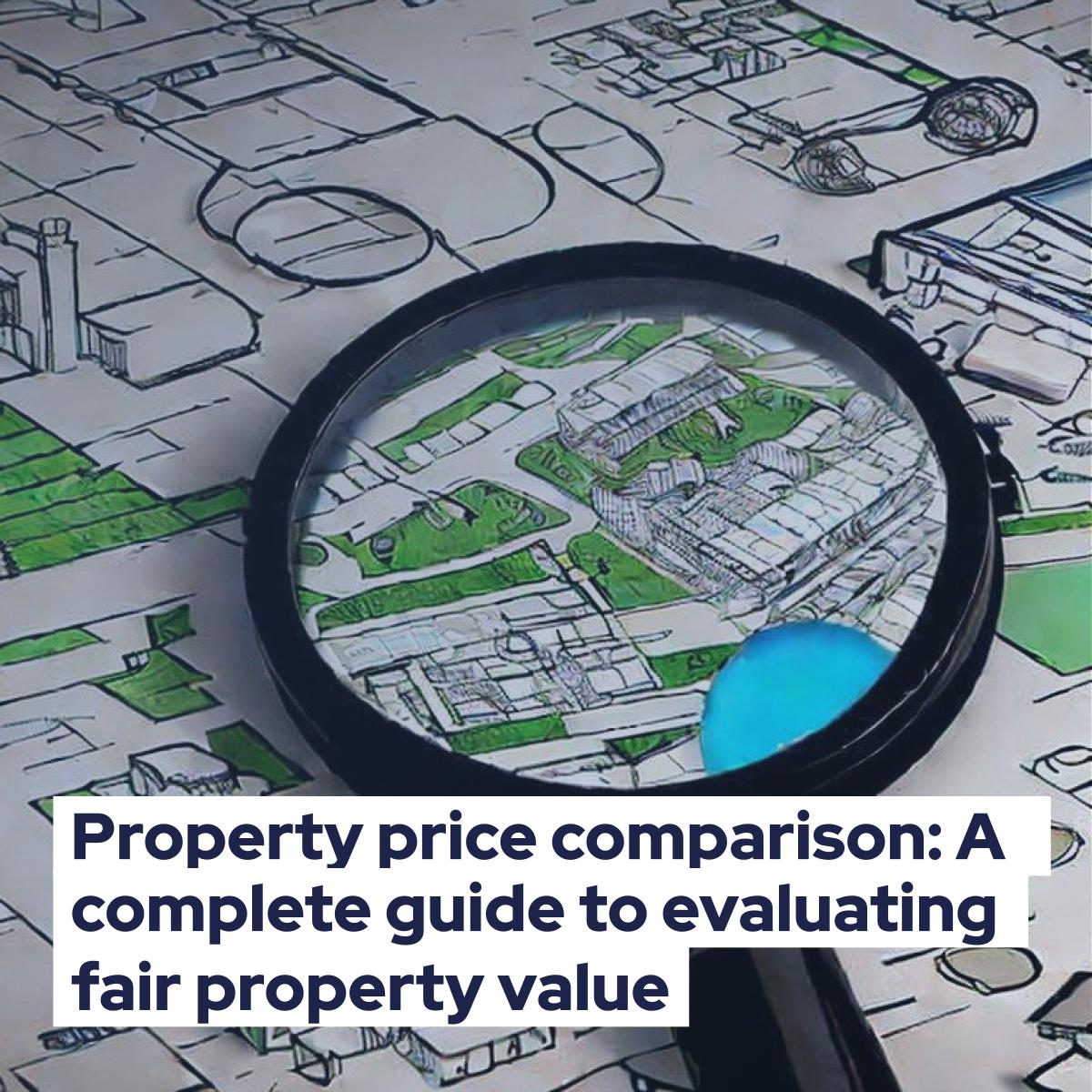 Property price comparison: A complete guide to evaluating fair property value 🏠💰
Property price comparison: A complete guide to evaluating fair property value 🏠💰
Evaluating the value of a property is essential for both buyers and sellers. In this comprehensive guide, you will learn how to efficiently compare property prices and find the fair value for your home or real estate investment. We will cover the following topics:
- 📊 Main methods for estimating property value
- 🔑 Key factors to consider when evaluating price
- 🔍 How to perform a comparative analysis of prices in the market
- 🛠️ Useful tools and resources for price evaluation
Main methods for estimating property value
There are three main methods for evaluating the value of a property:
- 💰 Cost approach: This method estimates the cost of reconstructing a property, considering the value of the land and construction costs. This approach is particularly useful for new or under-construction properties.
- 👩💻 Income approach: Ideal for investment properties, this method calculates the value of a property based on its potential income generation. It involves studying rental data, capitalization rates, and market growth projections.
- 👌 Comparative market analysis (CMA): The CMA, also known as the comparable sales approach, is the most popular method for determining property value. This method compares the selling prices of similar properties in the same area, adjusting for relevant differences to establish a reasonable and appropriate price range.
Key factors to consider when evaluating price
When analyzing property prices, it is essential to consider multiple factors that can impact their value, such as:
- 📍 Location: The location of a property is one of the most critical elements in determining its value. Factors such as access to services, public transportation, schools, and hospitals, as well as neighborhood safety, will influence the price.
- 🏠 Condition and Repairs: Well-maintained and updated properties generally have a higher value than those in need of repairs. Don't forget to check the condition of electrical systems, plumbing, and roofs.
- 🏋️♀️ Features and Amenities: Unique features and amenities of a property (pool, garden, gym, etc.) can increase its value. However, it is necessary to ensure that such features are in demand by the target market.
- 📐 Size and Layout: The size and layout of a property impact its value. Generally, buyers look for homes with more space and rooms. Good layout is also essential, as it allows for efficient utilization of space.
How to Conduct a Comparative Market Analysis (CMA)
To conduct a successful CMA, follow these steps📊🏠:
- Identify comparable properties in the same area, preferably sold within the last six months. Also, consider active, pending, and reserved properties in the market. 🏘️🔍
- Analyze and adjust the differences between the selected properties and the property under evaluation. Consider factors such as size, condition, land, and additional features. 📏✨
- Establish an appropriate and reasonable price range for the property based on the data obtained from comparable properties. 💰🎯
Useful Tools and Resources for Price Evaluation
There are several tools and resources that can assist you in evaluating property prices, such as:
- Real estate websites like Zillow, Redfin, and Realtor.com that provide information on property prices and market trends. 🌐🏢
- Real estate agents with local market knowledge can be a valuable source of information and guidance in price evaluation. 👥🏠
- Professional appraisers who can provide impartial and expert property valuations. 📝💼
Legal and Regulatory Aspects to Consider in Property Price Evaluation
In addition to the aforementioned aspects, it is also crucial to consider legal and regulatory factors that can influence the value of a property. Some of these include:
- 📚 Urban Planning and Land Use Regulations: Zoning and land use regulations can impact the value of a property. Changes in regulations can increase or decrease the value, depending on whether more or less intensive land use is allowed. 🏢📏
- 📜 Restrictions and Legal Encumbrances: Restrictions and encumbrances, such as easements or mortgages, can have a negative impact on the price of a property. It is crucial to thoroughly investigate any legal impediments before engaging in a real estate transaction. ⚖️🔒
- 💰 Taxes and Associated Expenses: Property taxes and common expenses, such as utility fees and maintenance fees in properties with a horizontal property regime, can influence the perceived value by buyers and investors. 💸💡
Additional Sources of Information for More Accurate Price Evaluation
While the tools and resources mentioned above can be useful, it is also beneficial to explore additional sources of information that can complement and deepen your analysis. Some of these sources include:
- 📊 Real Estate Market Statistics and Studies: Specialized companies and industry associations often publish reports and studies on market trends and evolution, which can help contextualize your price evaluation and understand the macroeconomic landscape affecting the sector. 📈📉
- 💬 Real Estate Investor Forums and Groups: Participating in forums and groups of real estate investors can provide different perspectives and practical advice to enhance your skills in property price evaluation. 💡🗣️
- 📚 Educational and Training Resources: Courses and training programs in property evaluation and real estate investment can be helpful in improving your knowledge and staying up-to-date with the latest techniques and tools in the field. 🎓📚
In summary, property price evaluation is a complex process that requires a multifaceted approach. Considering legal and regulatory aspects, exploring additional sources of information, and staying updated in the real estate market will allow you to conduct more accurate price evaluations and make informed decisions in your investments. Keep refining your skills and achieve success in the real estate world! 🏡💼✨

